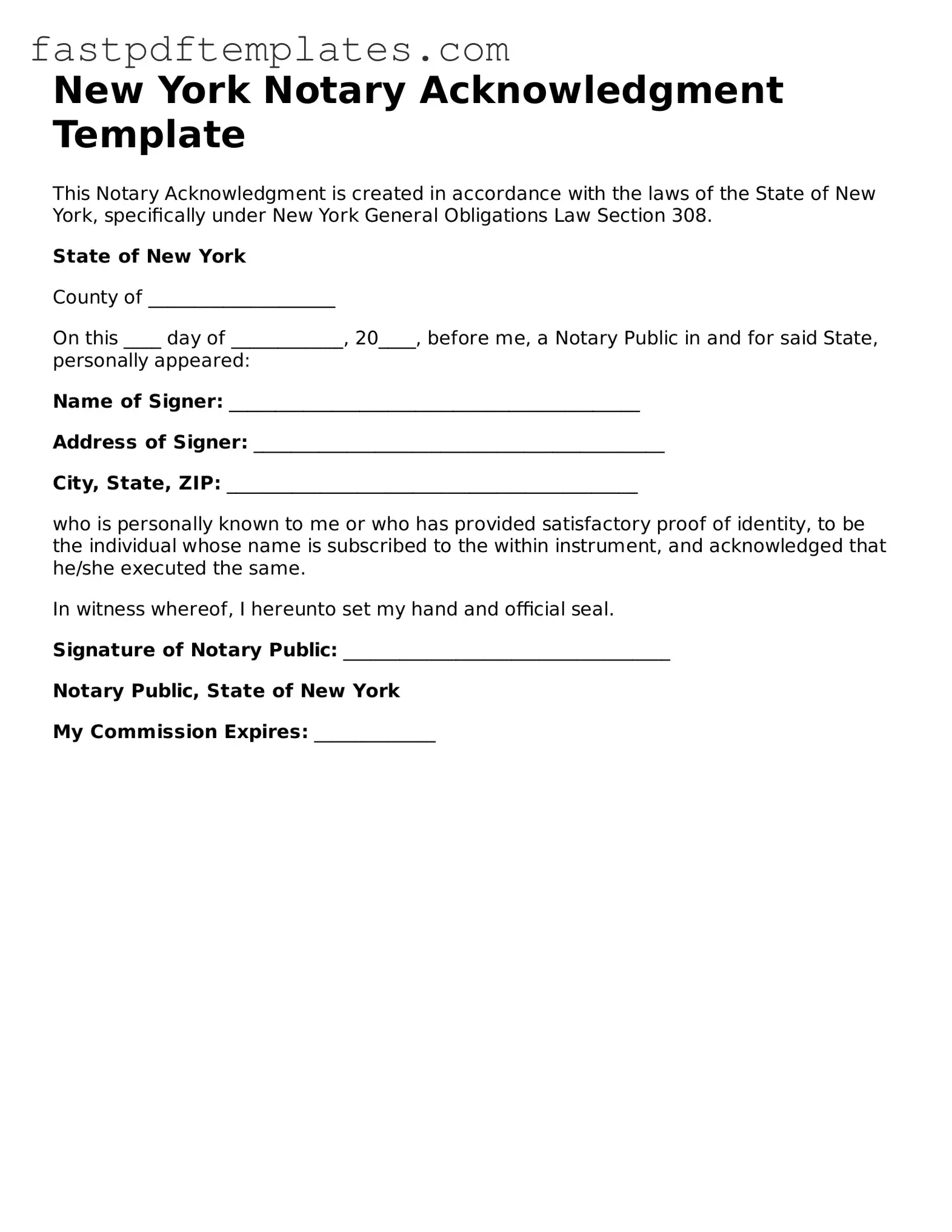Attorney-Approved New York Notary Acknowledgement Document
The New York Notary Acknowledgment form is a legal document that verifies the identity of individuals signing a document and confirms their willingness to do so. This form plays a crucial role in various transactions, ensuring that signatures are authentic and legally binding. Understanding its purpose and proper usage can help individuals navigate important legal processes with confidence.
Access Document
